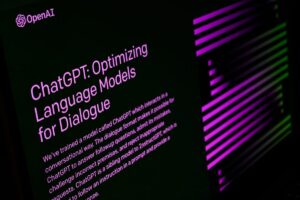Exclusive: Uncovering the Truth Behind Sam Altman’s Dismissal from OpenAI

Understanding the Circumstances of Sam Altman’s Departure from OpenAI
Sam Altman’s recent exit from OpenAI has stirred considerable discussion and speculation in the tech community. The circumstances surrounding this significant move have raised many questions regarding the dynamics within the company and its leadership.
Background on Sam Altman and OpenAI
Sam Altman, a notable figure in the tech industry, co-founded OpenAI in 2015 with the goal of ensuring that artificial intelligence (AI) advances in a way that benefits humanity. Under his leadership, OpenAI developed several groundbreaking technologies, including the widely acknowledged language model, GPT-3, which revolutionized the field of natural language processing.
OpenAI was initially founded as a nonprofit organization, dedicated to conducting research in AI. However, in 2019, it transitioned to a "capped-profit" model. This shift aimed to attract investment while still focusing on its mission to prioritize human-centered AI. Altman was a critical player in this transition and played an instrumental role in steering the direction of the organization.
Key Factors Leading to His Departure
The reasons behind Altman’s departure from OpenAI are complex and multifaceted. Here are some key factors that have emerged:
1. Strategic Differences
One of the major points of contention reportedly arose from differences in strategic vision. Leadership within the organization had differing views on how to balance profitability with ethical considerations in AI development. While Altman championed aggressive growth and monetization strategies, other board members were more cautious about the implications of rapidly advancing AI technologies.
2. Governance Challenges
The governance structure of OpenAI has also come under scrutiny. Some sources indicate that there were tensions between board members regarding decision-making processes and organizational control. Differences in opinion on how to manage AI risks and pursue long-term research goals played a significant role in the evolving dynamics between Altman and the board.
3. Public Pressure and Accountability
As OpenAI’s technologies gained prominence, the organization faced increasing pressure from the public and policymakers to navigate the ethical implications of AI. Altman often found himself at the forefront of these discussions, and the mounting accountability may have influenced management decisions.
Reactions from the Tech Community
The tech community’s reaction to Altman’s firing has been largely mixed. Here are a few notable perspectives:
1. Support from Employees and Industry Peers
Many employees at OpenAI expressed shock and dismay over the board’s decision to remove Altman. A number of them have voiced their support for him, indicating that he was instrumental in driving innovation and fostering a positive work culture at the organization. His clear vision and ability to motivate teams were traits often highlighted.
2. Concerns About Future Direction
Industry experts and analysts are now speculating about the future trajectory of OpenAI. Some express concerns that the absence of a visionary leader like Altman might hinder the organization’s ability to compete effectively in the increasingly competitive AI landscape.
3. Calls for Greater Transparency
Several advocates for ethical AI development have called for more transparency regarding governance decisions at OpenAI. This incident has prompted discussions about the importance of having a clear, accountable leadership structure to navigate the complexities of AI advancements responsibly.
What Lies Ahead for Altman and OpenAI?
As both Sam Altman and OpenAI navigate this transition, the focus is likely to shift toward the paths they each will take next. Altman’s expertise and leadership will undoubtedly find new avenues, possibly within or outside the tech industry.
OpenAI, on the other hand, will need to reassess its strategic priorities and governance structures to maintain its mission and navigate the rapidly evolving AI landscape effectively. The ongoing developments will be closely monitored by stakeholders, policymakers, and the broader tech community as they unfold.






